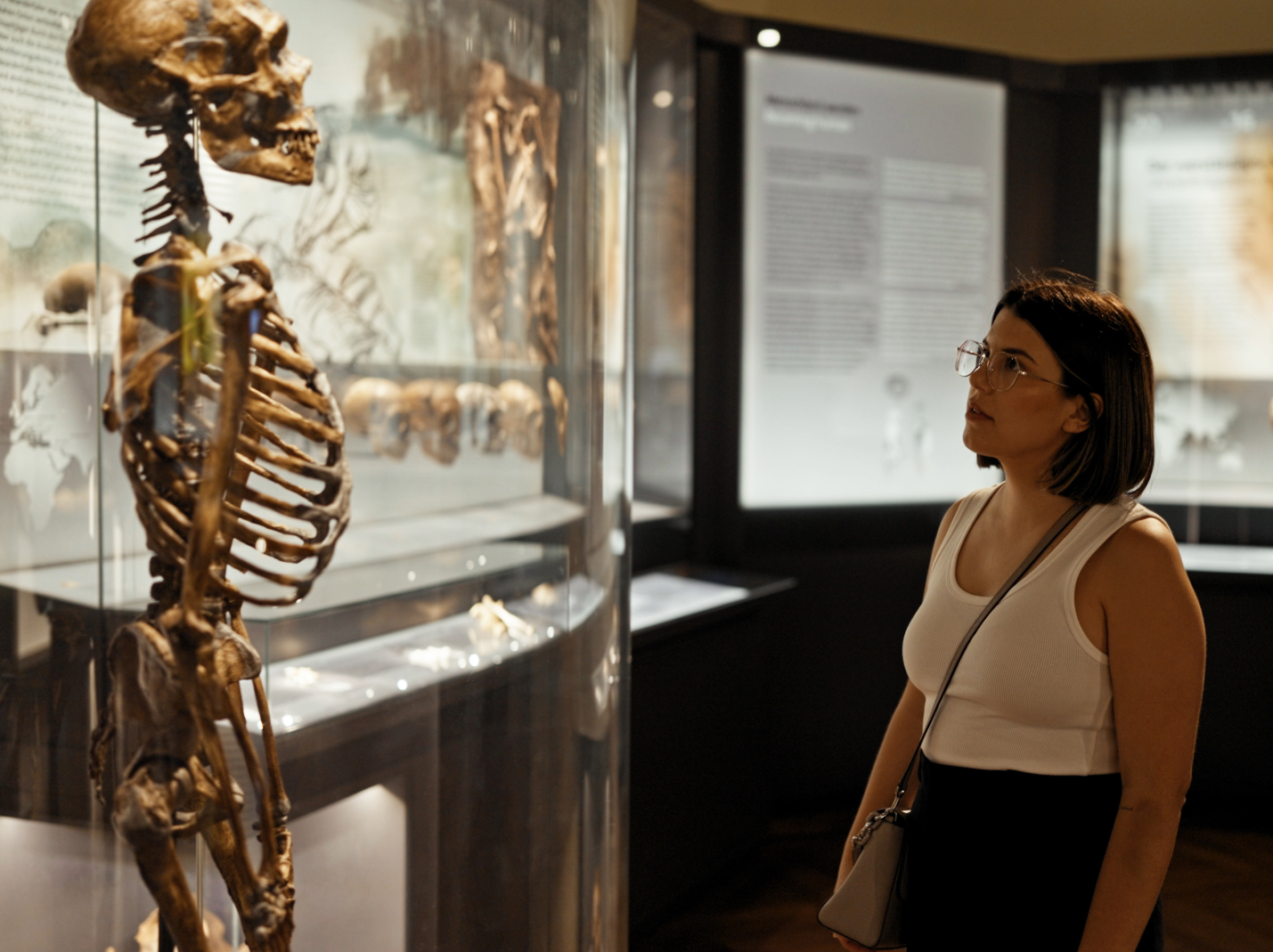
In the last year, there has been a rapid increase in actions that involve removing human remains and photographs of human remains from anthropology and archaeology classrooms, conference halls, publications, and museums, including the American Museum of Natural History, the Penn Museum, and the Carnegie Museum of Natural History. These museums and many others around the nation and the world are also removing skeletal remains and mummies from displays.
The decision to cease using photos of human remains and artifacts at the Southeastern Archaeological Conference made headlines in Science. Larger organizations, such as the Society for American Archaeology, have also been captured by this movement. And, the new president of the American Anthropological Association stated in her presidential address that “on the morality of photo displays in anthropology reminds us that even the dead, the unnamed, deserve to have voice in our use of their stories in our research.”
Museum websites, such as Mütter Museum’s, have removed all images of human remains from their research catalog, and the Smithsonian’s Written in Bone, a website for use in high school classes to engage students with forensics, archaeology, and health, has been replaced with apologies for showing skeletal remains.
In May, The Wall Street Journal (WSJ) reported that professors of anthropology, including bioarchaeologists who study skeletal remains found in archaeological sites, forensic anthropologists who study skeletal remains at crime sciences, and even paleoanthropologists who study early humans, like Neanderthals, are taking steps to cater to students with “heightened personal and cultural sensitivity.” These mostly Millennial scholars are using “trigger warnings” before photos of skeletal remains appear in the lecture slides, or even choosing to use “drawings of the dead instead of photos in their slideshows.” Some professors even opt to “train students on plastic bones instead of real ones.” Although these changes are occurring to a greater extent in the U.S., professors in the U.K. are taking such precautions.
The disappearance of human remains and photographs of human remains from museum exhibits and in the classroom is a travesty.
We are losing the wonder of studying the past, the surprise that comes from learning about the individual diversity of bones, and the ability to separate feelings from curiosity. Ironically, even though in the WSJ article, a Harvard anthropology senior states that “[t]here’s no harm in adding a trigger warning,” trigger warnings have actually been shown to increase people’s anxiety and actually do deaden people’s appreciation of the image that they are about to view—whether this affects one’s ability to appreciate the beauty and wonder of anatomy is unknown.
As a physical anthropologist who spent my career studying skeletal remains, especially from precontact Native Americans, I can see the end of our field of study, especially in California, where three recent laws—AB275, AB226, and AB389—are burying science.
California passed AB389, which “prohibits the use of Native American human remains or cultural items for the purposes of teaching or research at the California State University.” This will empty anthropology labs that teach students the skills of osteological identification needed for careers in medicine, cultural resource management, and forensic anthropology. Forensic anthropologists help identify victims of some of the worst tragedies, such as the 9/11 terrorist attacks and the FBI siege of the Branch Davidian cult. Their skills can only be learned on collections of real bones: intact, broken, burnt, and fragmented.
Yet, even if one thinks that models and drawings are the way forward, they will also be removed from access.
During recent Native American Graves Protection and Repatriation Act (NAGPRA) meetings, Native American activists and their allies discussed their concerns over pictures and casts. They spoke of ways to obtain casts from European museums and to prevent private companies from making casts for use in classrooms. The reason for these concerns: they fretted that “if you can create something to entice the spirit of someone to inhabit it, you can control it,” and the casts, they argue, can “entice the spirit.” Thus, these items—now considered a legitimate substitute for real bones—will also face calls for repatriation and will be destroyed.
A bizarre blend of squeamishness about human remains, coupled with superstition-based indigenous activism, is robbing students of the chance to learn about death properly. It will also have dire, unforeseen consequences, especially when this ideology spills out of anthropology and into fields such as medicine, as is already beginning to happen. Are you ready for the next generation of doctors, trained not on human remains but on—at best—computer simulations? Count me out!
Photo by Krakenimages.com — Adobe Stock — Asset ID#: 685818781

First they came for the Socialists, and I did not speak out — Because I was not a Socialist. Then they came for the Trade Unionists, and I did not speak out — Because I was not a Trade Unionist. Then they came for the Jews, and I did not speak out — Because I was not a Jew.
First they came for the mascots then they came for the football teams and then they came for JK Rowling.
We have not figured out how to coexist with those with whom we disagree strongly. If you think you have figured this out defend Trump like you mean it.
Not every American Redskin was opposed to the name of the Washington Football team. But what do I care I don’t even like football
““if you can create something to entice the spirit of someone to inhabit it, you can control it,” and the casts, they argue, can “entice the spirit.” Thus, these items—now considered a legitimate substitute for real bones—will also face calls for repatriation and will be destroyed.”
I suggest that this is more about power (and money) than anything else. Something similar is happening in Maine which has a law that Indian History be taught, a perfectly reasonable requirement except that tribal authorities have decreed that (a) they are the only ones allowed to teach it and (b) they have the sole authority to define the content of “their” history, over which they claim ownership.
There was nearly 200 years of quite nasty warfare with both the English and Indians attempting various acts of genocide, and amongst the various Indian tribes themselves. Some of the latter were successful, e.g. the Pocumtucs were exterminated by the Mohawks. Another unpleasant fact is that young girls (not just women) were routinely kidnapped as sex slaves — usually taken up to Canada and sold to another Indian as his wife.
It’s a historical fact that on June 6, 1757 — after a week-long siege — the Indians killed Ebenezer Hall and then kidnapped not only his wife but two daughters, aged 7 & 9, and took all three to Canada to be sex slaves. But we can’t mention this…
Repeatedly raping a 7 year old would be considered an act of savagery even before our current “Me Too” enlightenment — and yet that can’t be mentioned in Maine K-12 — I only know about this because I am from Matinicus Island where it happened.
What I think is really behind the California laws is a desire to establish a monopoly in the various academic fields — not unlike saying that only persons of Italian ancestry can make and sell pizzas. If you restrict entry to the profession, which *is* considered “restraint of trade”, you raise the income of those who are permitted to be in the profession.
History is also messy, there are usually not only two sides to what happened but usually at least a half dozen — and if you can silence the other voices, you get to write the history the way you want it written. The irony here is that it is the people who LOST the war being given the right to write the history of it. Sad….